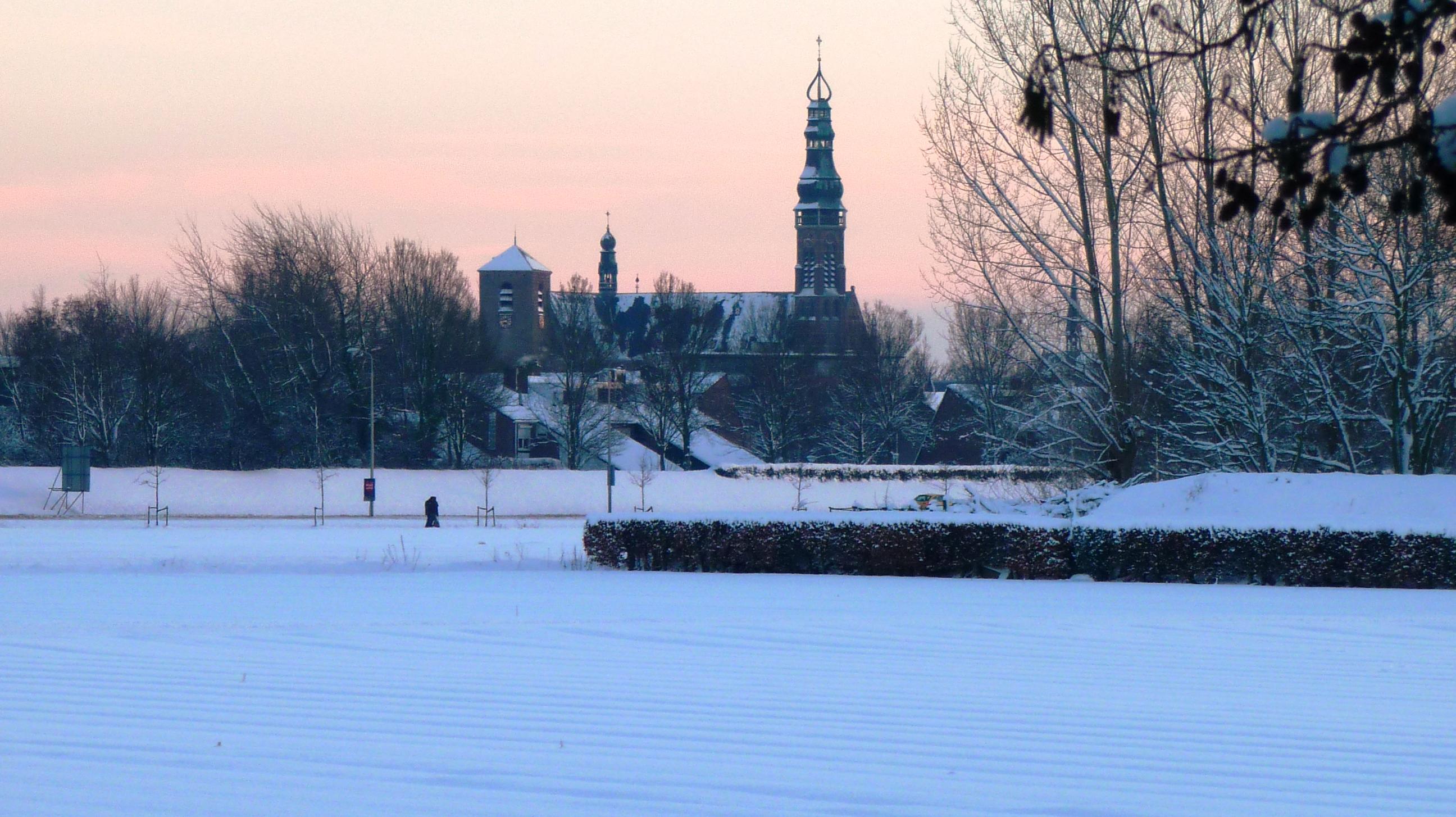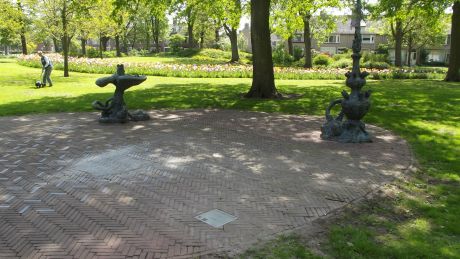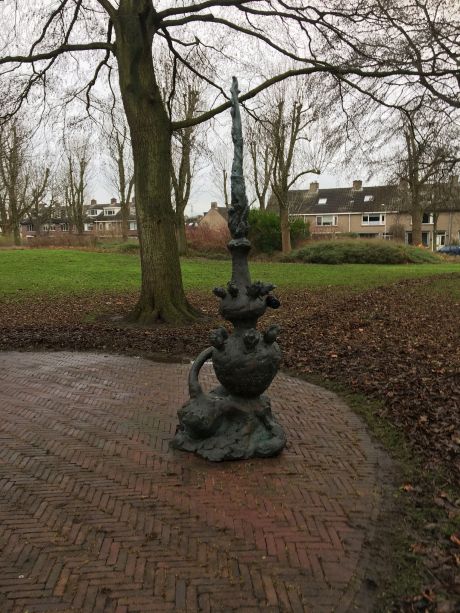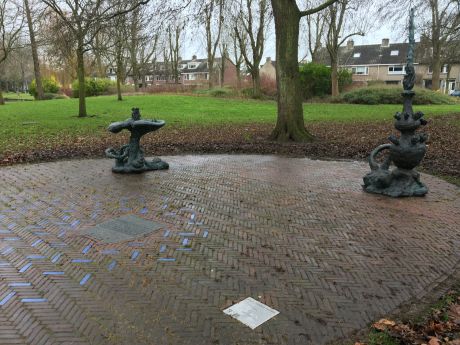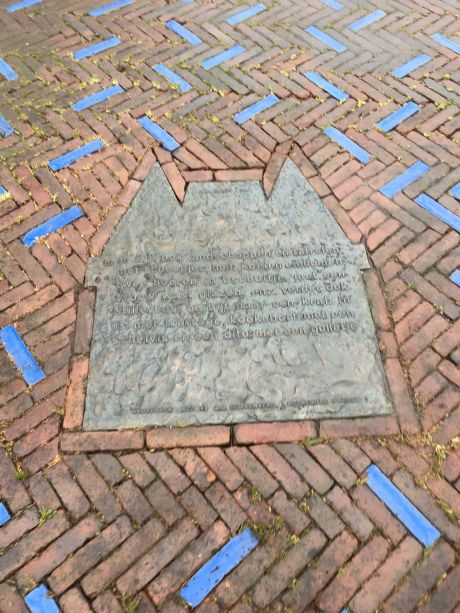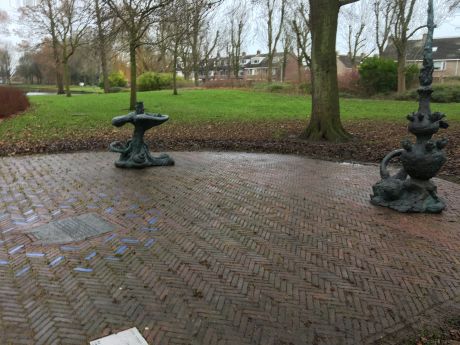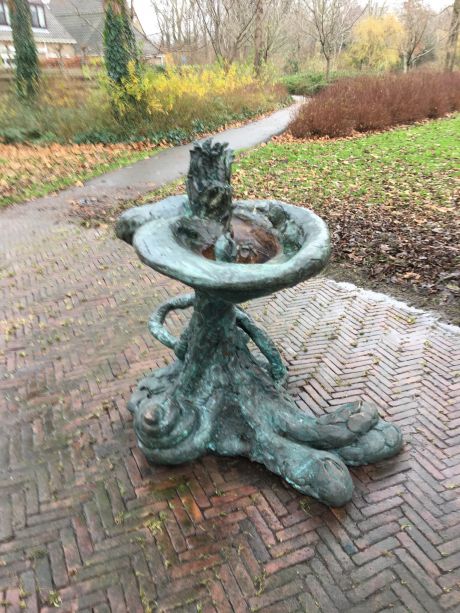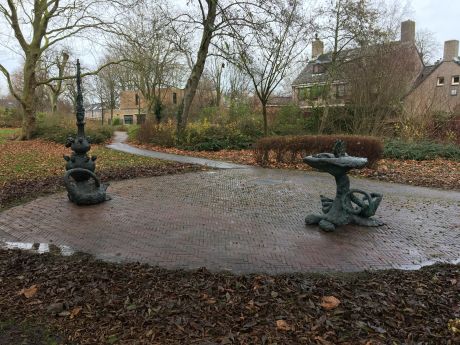Lisse, ronduit verteld
| Kunstenaar: | Juul Sadée |
| Straatnaam: | Gerard Doustraat, Ruishornlaan, in het plantsoen |
| Poelpolder | |
| Materiaal: | Brons |
| Jaar van plaatsing: | 2013 |
...
Omschrijving:
Het plein 't Vierkant, waar tot 2013 Juul Sadees kunstobjecten prijkten, is ontstaan rond 1200. Jules Sadee heeft middels een communicatienetwerk met de bevolking, de middenstand en politici een voedingsbodem gecreeerd voor beeldende kunst en een analyse gemaakt van de gebruiks- en belevingsfunctie van het plein.
Het kunstwerk bestaat uit drie bronzen kunstobjecten: een fontein in de vorm van een oor met water en tulpen erin, een tulpenvaas en een plaquette met een kasteel en een golf van blauw geglazuurde klinkers in de bestrating. De objecten - in harmonie met de leilinden, hekwerken, klimop en zitbanken - roepen associaties op met de nog steeds actuele historie van Lisse en het communicatieproces dat vooraf is gegaan aan de ontwikkeling van het plein. De objecten zijn zo geplaatst dat Het Vierkant bruikbaar is gebleven voor diverse publieksactiviteiten.
Na herprofilering van plein 't Vierkant zijn de kunstwerken verplaatst naar het plantsoen bij de Gerard Doustraat.
Lisse, a Round Story (1994)
The square ‘t Vierkant, where Juul Sadée’s works of art were displayed, was created around 1200. Through a communication network with inhabitants, local shopkeepers and politicians, Juul Sadée created a breeding ground for visual arts. She also analyzed how the square is used and experienced.
The square houses three of her bronzes: an ear-shaped fountain containing water and tulips, a tulip-shaped vase and a plaquette with a castle and a wave of blue enamelled bricks in the paving. The objects – in harmony with the square’s railings, ivy and benches – bring to mind associations with the history of Lisse, still relevant today; and also with the communication process preceding the redevelopment of the square. The objects are placed in such a way that ‘t Vierkant can still be used for various public activities.
Plattegrond:
